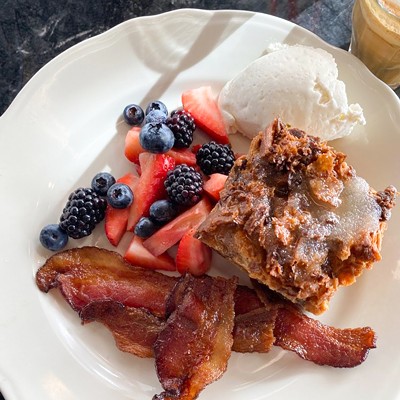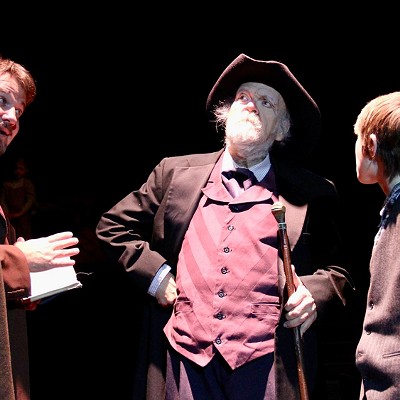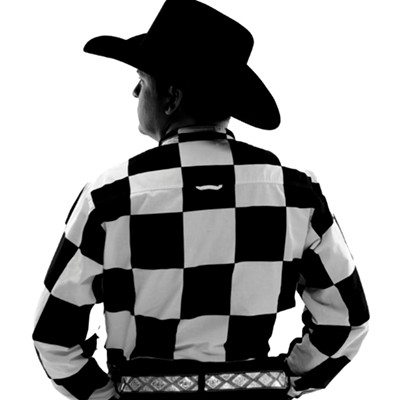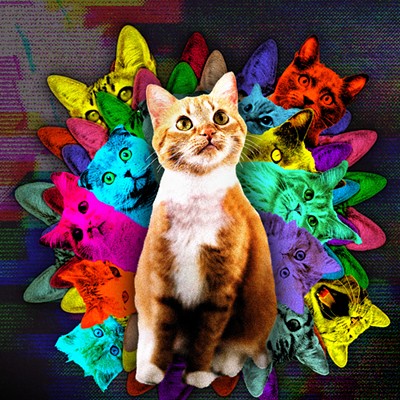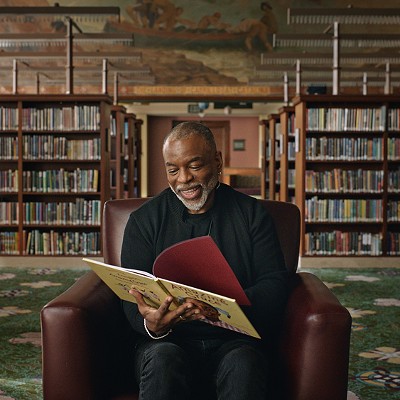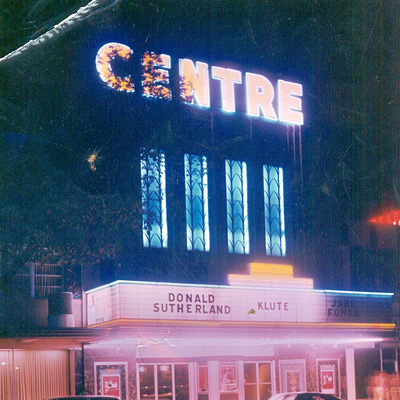
The film, about a goofy slacker who starts his own indie television station, should have been just another cultural oddity, but Hollywood completely underestimated the collective power of Yankovic’s fans. Twenty-five years later, UHF is more popular than ever, continuing to make generations of geeky kids and their even geekier parents laugh uncontrollably with its clever mash-up of pop-culture parodies, infectious song satires and unashamed silliness.
Neither Yankovic nor director Jay Levey remember exactly how they came up with the idea for UHF, but they knew they were looking for a way to translate Yankovic’s comedic sensibilities to the big screen. A TV station seemed like the perfect fit.
“We were looking for a skeleton of a plot just as an excuse to do a lot of parodies and sight gags and things like that, and we thought that if it could revolve around a TV station, then we could do commercial and TV show parodies, movie trailers, anything that came to mind,” Yankovic said. “So we got together, we hashed out the plot and wrote the script out longhand on a piece of notebook paper.”
To direct the film, Yankovic chose his longtime manager and frequent collaborator Jay Levey, who had already directed many of Yankovic’s videos — as well as his TV specials — up to that point.
“It was a natural fit as much as yes, I was looking forward to being able to direct my first feature. But more importantly, it was really to protect the comedy and make sure that in our minds, it was represented properly on the screen,” Levey said. “We felt that as a team, we could execute the comedy better in the way it was intended, with respect to how the comedy was to play on the screen, more than an outsider could.”
Begin transmission
Though they were turned down by “virtually every studio in Hollywood,” according to Yankovic, help came in the form of legendary Oklahoma born-andbred producer Gray Frederickson, most famous for his collaborations with Francis Ford Coppola on The Godfather trilogy and Apocalypse Now. When the script passed over his desk, Frederickson thought it was the “most insane” thing he had ever read.

“We sent it off to a couple of places, but it immediately got picked up by a company called Orion Pictures. They were kind of a hot company at the time, coming off of a big hit with RoboCop, and they put up the budget of $5 million,” Frederickson said. “It was the easiest deal I ever made. It just fell into place. They loved
Weird Al because of his following in the music scene, and everybody had a
lot of hope for it. So it was sent out to the studio, they said okay
and we were off and running.”
With
the budget in place and the cast taking shape with the likes of Michael
Richards, Fran Drescher and Victoria Jackson, all that was left was to
find a place to film. Frederickson, having recently worked with Coppola
on the Tulsa-lensed duo of The Outsiders and Rumble Fish, was adamant Tulsa was the place to shoot UHF. Yankovic and Levey agreed.
“There
were a number of logistic reasons to shoot in Tulsa,” Yankovic said.
“We were able to locate a place where we could shoot all of our interior
locations. It was the old Kensington mall, which was located next to
our hotel, so it was very convenient for us to basically take over the
abandoned mall and make it into a movie studio. We just really loved
Tulsa. We felt very comfortable there, and it felt like a wonderful
place to spend a summer.”
The filming of UHF ran
throughout the extremely hot summer of 1988, but it didn’t stop scores
of fans from Tulsa and beyond from coming down and taking part in one of
the many scenes that required extras. Yankovic remembers the shoot
filled with “energy that was really exciting to be a part of.”
One of these locals was Wagoner High School art educator Kelie Myers — then a shy Tahlequah teen — who got the job as an extra through a family friend. Growing up a fan of Weird Al, she was starstruck working with the cast, especially Victoria Jackson. While she is prominently featured in many scenes throughout the film, sadly, a loose Swatch watch cost her a close-up.
“In the last scene, the director said that Weird Al is not the hero right now; Michael Richards is the hero,” Myers said. “So he drove up in a Jeep and everybody ran up to Weird Al’s side of the jeep. The director said, ‘Okay, I’m only going to pick a few people that run to over here where Weird Al is,’ and I was one of the people they picked. So I ran out there, very excited, and my Swatch watch fell off of my wrist and under the Jeep. I was afraid it was going to get stepped on or run over, so I dove under there and got it. But by the time I came up, the scene was over. I remember thinking to myself that we’ll do this fifty times, like we do everything else, but oh no. He said, ‘We got this.’ So I didn’t get my little moment there where I could have had a close-up, because I was under the Jeep digging for my Swatch watch.”
Bad reception
UHF was released July 21, 1989. Even though
the film received the highest test-marketing scores in Orion Pictures’
history, its opening weekend gross was a paltry $2.5 million and didn’t
even crack the top ten, blocked by Weekend at Bernie’s. An aura of defeat hung heavy on the filmmaker’s hearts.

“I
guess, in retrospect, we had unrealistic expectations,” Yankovic
lamented. “We certainly thought it was going to be a bigger hit than it
was. Right up until the actual release date, Orion had positioned it as
their big summer blockbuster comedy. They had very high hopes for it,
and unfortunately, it didn’t deliver.”
Frederickson believes that if the film had been released in the less-crowded fall, UHF would have fared better. It’s a sentiment that Levey echoes.
“It
was not only going to be their big summer hit, it was going to save
their studio because they were going out of business,” Levey said.
“Going into it, they thought they had this modest, low-budget comedy
that, because of Al’s popularity and the pedigree of the film’s
producers who had made Rocky, Das Boot and The Godfather, they
readily agreed to make the movie. But I’m not sure they really knew
what they had. They put us out opposite not only the biggest movies of that year, but the biggest movies of all time, so we got clobbered. There’s no way we could compete with those.”
Myers has different memories however, probably more in line with the thousands of kids who saw UHF in the short time it was in theaters.
“At 14 years old, it was a big deal to me!” Myers exclaimed. “I had friends over and we went to see it when it came out and it was very exciting. We watched the whole thing, looking for me, then it comes to that last scene and I am dead-center in that scene. That’s pretty exciting for a 14 year old. I was a little shy at that age in school, so that was something that really gave me confidence. It made me feel like I had done something special.”
Back on the air
Even though UHF was
a bomb in theaters, it has always done respectably well on home video.
But no one, especially the filmmakers, were ready for the torrent of
fandom that would come their way when the film was released on DVD by
MGM Home Entertainment in 2002. It shot to the top of the home video
bestseller charts and paved the way for a new generation of UHF vidiots.
“It
was nice, and I was very gratified by the fact that fans eventually
discovered it and that now, it’s considered a cult classic of sorts,”
Yankovic said.

Both Levey and Frederickson said they believe one of the factors in UHF’s recent
success has been its prophetic foretelling of the rise of insipid
reality-based television, but Levey took it one step further and added
that he thinks it still holds up today.
“I
just really view it for what it is and the comedy on the screen,” Levey
said. “Even though we wrote it together and I directed it, you can see
and hear [Yankovic’s] voice in every frame of that movie. It’s a very
individual voice and creative point of view that is original. It’s just a
certain brand of comedy that people enjoy.”
Myers found out the movie was popular among the youth when she overheard one of the kids from her church quoting the famous line, “Badgers? We don’t need no stinkin’ badgers!”
“I was like, ‘You guys know that?’” Myers recalled. “And this girl turns to me and says ‘Yeah, there’s this movie called UHF. Do you know who Weird Al Yankovic is? Have you seen that movie?’ and I was like ‘Seen it? I was in it! I’ve waited my whole life to say that!’ I had no idea it had returned like that. I always tell people I was in a cult film and I didn’t even have to take my clothes off!”
The
city of Tulsa has been honoring its adopted cult icon throughout the
months of September and October with film screenings, telethons and
festivals. In what will end the 25th anniversary celebrations, Yankovic
will play the final show of his long-running Alpocalypse tour at 7 p.m. Oct. 19 at Brady Theater in Tulsa.
“There’s
going to be an extra-special energy for this live show because Tulsa has
a special place in my heart,” Yankovic said. “It’s the last show of a
very long tour, so I think it’s going to feel very special in its own
way.”
So even though we have a happy ending for Yankovic, what about an ending for George Newman, UHF’s hapless cable company owner? What would he be doing 25 years later?
Levey believes that he would no longer be eating “Twinkie wiener sandwiches” because he became a vegetarian, but Yankovic said that he thinks George is still “working at the same station and wondering why no one’s watching.”
Frederickson offered a similar, yet far happier ending.
“I like to think that he’s still running the cable channel, but he’d probably expand and start another one here in Oklahoma City, don’t you think?”
Learn more about the show at bradytheater.com.


